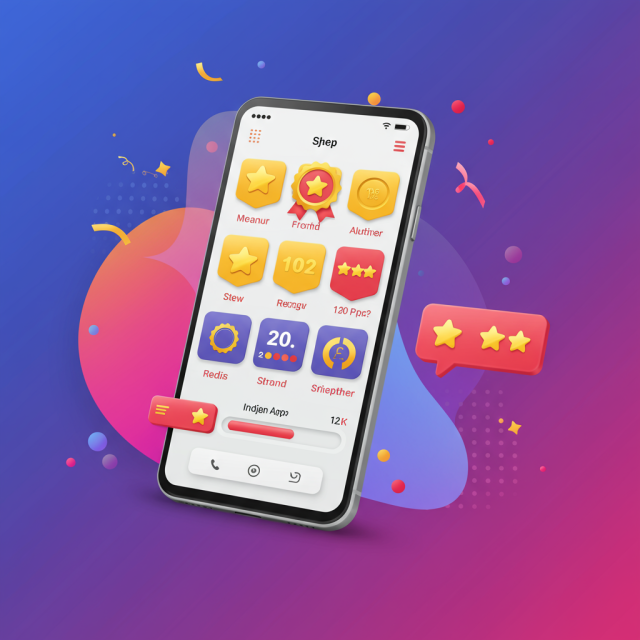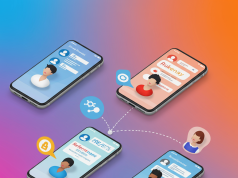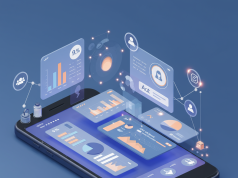Win Users with Gamification: Strategies to Boost Engagement & Retention in Mobile App Marketing
In today’s fiercely competitive mobile app landscape, capturing users’ attention is only half the battle. Keeping them engaged and coming back time after time is the real challenge. This is where gamification comes in. By integrating game-like mechanics into non-game contexts, you can transform mundane tasks into rewarding experiences, driving higher engagement and retention rates. In this comprehensive guide, we’ll explore why gamification matters, outline core elements, share best practices, and highlight real-world examples you can learn from.
Why Gamification Matters in Mobile App Marketing
At its core, gamification taps into fundamental human motivations—achievement, competition, and social interaction. When users earn points, collect badges, or climb leaderboards, they experience a sense of accomplishment that encourages repeat behavior. According to Gartner, by 2025, more than 50% of organizations will gamify their processes to drive user engagement.
For mobile apps, this translates directly into higher retention rates and increased lifetime value (LTV). Apps that incorporate rewarding game mechanics can see retention improvements of up to 30% compared to non-gamified counterparts. These metrics are critical as user acquisition costs continue to climb—keeping existing users actively engaged becomes more cost-effective than constantly chasing new installs.
Core Gamification Elements to Integrate
- Points and Scoring: Simple but powerful. Award points for key actions like daily logins, completing a tutorial, or sharing content.
- Badges and Achievements: Visual tokens of success; badges can celebrate milestones such as completing levels or hitting usage streaks.
- Leaderboards: Foster healthy competition by ranking users based on their points or achievements. Offer weekly and global leaderboards for variety.
- Progress Bars and Levels: Show users how close they are to the next reward tier, tapping into the Zeigarnik effect—the urge to complete unfinished tasks.
- Challenges and Quests: Structured tasks that guide user behavior and introduce new features, boosting feature discovery.
- Rewards and Incentives: Tangible benefits like discount codes, in-app currency, or premium features unlocked through gamified actions.
- Social Sharing: Encourage users to share achievements on social media to increase word-of-mouth and organic referrals.
Best Practices for Implementing Gamification
Implementing gamification requires more than slapping on points and badges. Follow these best practices to ensure meaningful, long-term engagement:
- Align with Business Goals: Define what behaviors you want to drive—daily active users, referrals, feature usage—and map gamification mechanics to those objectives.
- Keep It Simple: Avoid overwhelming users with too many mechanics at once. Start small and iterate based on user feedback and metrics.
- Balance Challenge and Skill: Apply the Flow Theory by matching challenges to user skill levels. Too easy and users get bored; too hard and they get frustrated.
- Personalize the Experience: Use data to tailor challenges, rewards, and communication, making each user’s journey unique.
- Encourage Social Interaction: Add collaborative quests or team-based challenges to foster community and viral loops.
- Test and Iterate: A/B test different mechanics, reward types, and designs. Use analytics to identify what resonates with your audience.
Real-World Case Studies
Duolingo: One of the pioneers in education app gamification, Duolingo uses streaks, XP points, and virtual currency to keep learners motivated daily. Its playful owl mascot and colorful UI make the learning journey feel like a game.
Starbucks: Starbucks transformed its loyalty program into a gamified experience. Customers earn “Stars” for each purchase, can level up to gold status, and access exclusive challenges to earn bonus Stars—driving both frequency and spend.
Nike Run Club: By integrating leaderboards, trophies, and monthly challenges, Nike motivates runners to log miles consistently and share their achievements, creating a vibrant community around its app.
Fitbit: Fitbit combines real-world steps with digital badges, challenges, and social leaderboards, encouraging users to compete with friends and stay active over long periods.
Measuring the Impact: KPIs & Tools
To justify your gamification investments, track the right Key Performance Indicators (KPIs):
- Retention Rate: The percentage of users who return over time (D1, D7, D30 retention).
- Session Length & Frequency: How long and how often users interact with your app.
- Daily Active Users (DAU) & Monthly Active Users (MAU): Core engagement metrics.
- Churn Rate: The rate at which users abandon the app.
- Lifetime Value (LTV): Total revenue generated per user over their lifecycle.
- Referral and Virality Metrics: Invite rates and new installs driven by existing users.
Popular analytics and gamification platforms to consider include Firebase Analytics, Mixpanel, Amplitude, and specialized solutions like GameRefinery and Badgeville.
Challenges and Pitfalls to Avoid
While gamification can be powerful, missteps can backfire. Avoid these common pitfalls:
- Over-Gamification: Too many game mechanics can overwhelm users and dilute focus.
- Poor UX Design: Confusing interfaces or unclear rules lead to frustration and abandonment.
- Irrelevant Rewards: If rewards don’t align with user motivations, they lose their appeal.
- Neglecting Core Value: Gamification should enhance—not replace—your app’s fundamental utility.
- Privacy and Ethics: Be transparent about data collection and ensure that challenges don’t exploit addictive behaviors unethically.
Future Trends in App Gamification
Looking ahead, several emerging trends will shape the next generation of gamified experiences:
- AR/VR Integration: Augmented and virtual reality open new immersive avenues for challenges and rewards.
- AI-Driven Personalization: Machine learning can dynamically adjust challenges, difficulty levels, and rewards based on individual user behavior.
- Blockchain & NFTs: Unique digital assets and tokenized rewards create scarcity and exclusivity, appealing to collectors.
- Social and Community-Driven Gameplay: Deeper collaboration features, shared quests, and user-generated content will strengthen app communities.
Conclusion
Gamification represents a proven strategy to enhance user engagement, boost retention, and ultimately increase your mobile app’s lifetime value. By thoughtfully integrating points, badges, challenges, and social features—and by continuously testing and iterating—you can create a captivating user journey that keeps people coming back. Start small, measure impact, and evolve your approach as you learn what resonates with your audience. With a well-executed gamification strategy, your app can stand out in a crowded market and turn casual users into loyal advocates.




